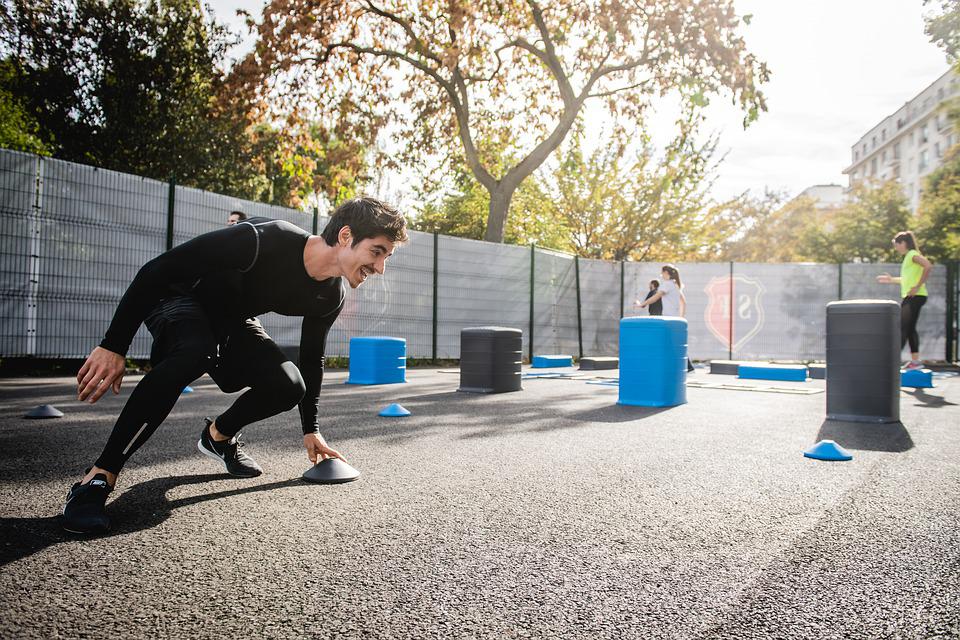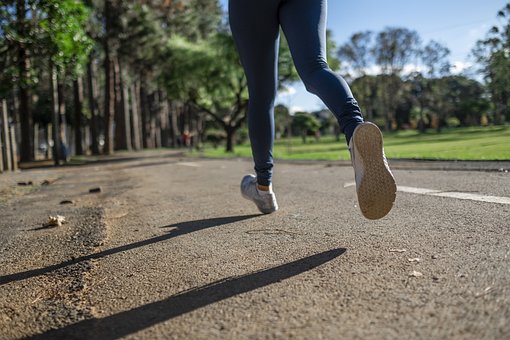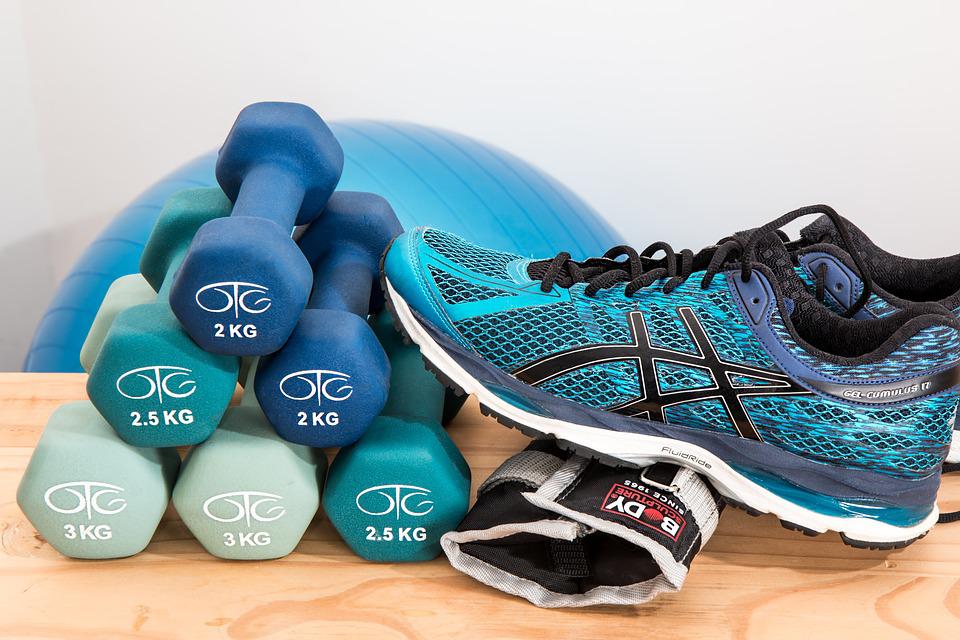
Are you pressed for time? Would you like to see improvement in your aerobic ability and physical activity results in much less time than usual endurance training takes? If that is the case, then interval training is the ideal recommendation from a fitness expert. Studies have shown that by dedicating just one hour a week doing interval training, compared to five hours per week of traditional endurance training, can increase your capacity and help you get back to fitness quicker after strenuous physical workouts.
Athletes know the magic of intervals. They constantly use intervals to boost their effectiveness and understand that they help hasten the bounce back phase so they can speedily move on to the next burst of intensity (for example, a sprint).
There are several advantages to interval training:
- Fitness and performance improve quickly with interval training, typically in just a few weeks. I’ve known athletes who reported an improvement in speed after just two interval workouts.
- Recovery time improves with interval training. Recovery is critical for athletes in sports like tennis, basketball, soccer or hockey, where the sport demands continuous stops and starts, or an endurance bike ride or road race where you hit hills and need to catch up quickly at the top in order to keep your pace. You’d never perform well if you sprinted all-out or climbed a hill and then needed two minutes to recover (also known as sucking wind). It would never work.
- Research confirms that interval training improves fitness similarly to traditional aerobic training in much less time.
- In one study comparing interval training to traditional training, subjects increased their fitness and the activity of many of enzymes that contribute to using oxygen efficiently with two and a half hours of intervals over two weeks compared with 10 and a half hours of traditional endurance training over the same time period.
- In another study comparing the two methods of training, subjects increased the use of stored glucose (glycogen) and fat by the same amount after five days a week of training for six weeks, but the interval subjects trained only one and a half hours per week compared with four and a half hours per week for the endurance subjects.
- Some interval training schedules can be too rigorous. In a study of subjects who did interval training every day for two weeks, the oxygen capacity increased, but anaerobic capacity did not. The investigators suggested that this was due to overtraining and exhaustion from daily interval sessions.
- To reduce the effects of overtraining, investigators had subjects perform six, two and half-minute interval sessions over a two-week period, with one to two days of rest in between sessions, to promote recovery. Interval sessions consisted of four to seven “all-out” 30-second sprints on a stationary bike with a total of four minutes of recovery. This training regimen increased fat burning and doubled endurance capacity with just 15 minutes of intense cycling over a two-week period!
Interval sessions can be very difficult, and you will have to find a large amount of internal drive in order to work hard. Nonetheless, the rewards will be well worth it. Search for someone to train with if you need some motivation. Making a promise to your significant other can persuade you to go out even when you do not feel like it, and having a bit of helpful rivalry could be a way to increase productivity.
What is a high intensity interval training (HIIT) workout?
Interval training includes alternating between periods of high-intensity activity and low-intensity activity, where both aerobic and anaerobic exercise are incorporated. In Sweden, where some maintain its origin story, this type of training is referred to as fartlek training, a Swedish phrase for “speed play”.
The aim of interval training is to challenge your body to go beyond its aerobic threshold for a brief time, then return to its normal aerobic level to help improve your speed, strength, and stamina.
The aerobic threshold is the level of exertion where your body shifts its primary source of fuel from fat to carbohydrates. This usually occurs at 85% of your maximum heart rate—exercising below 85% is deemed aerobic exercise, whereas anything above 85% is anaerobic.
How are interval-training sessions designed?
Interval training can be tailored to an individual’s specific needs in almost every way. The goal is to organize work and rest between activities in periods of minutes based on their active to recovery ratio.
For example, suppose you typically run at 6 mph on the treadmill in a relaxed manner. After doing your warm up and running at 6 mph for a few minutes, you should sprint for a minute at 7.5 mph, then walk at 6 mph for three minutes, for a total time of four minutes. Keep up the set intervals throughout the workout and then take five minutes to lower your heart rate.
Sample HIIT Workout
- Warm-up: five minutes at 5-6 mph
- Interval 1: three minutes at 6 mph (70% of max heart rate)
- Interval 2: one minute at 7 mph (80% of max heart rate)
- Interval 3: three minutes at 6 mph
- Interval 4: one minute at 7 mph
- Interval 5: three minutes at 6 mph
- Interval 6 – harder: one minute at 7.5 mph (85% of max heart rate)
- Interval 7: three minutes at 6 mph
- Interval 8: one minute at 7.5 mph
- Interval 9: three minutes at 6 mph
- Interval 10: one minute 7.5 mph
- Interval 11: three minutes at 6 mph
- Interval 12: one minute 7.5 mph
- Interval 13: three minutes at 6 mph
- Interval 14: last push — one minute at 8 mph (90% of heart rate max)
- Cool down: five minutes at 5-6 mph, then walk
Some athletes train all the way to their maximum heart rate. I wouldn’t suggest that starters go over 85%-90%, and the normal starting point would be a 1:3 work:active-rest proportion. Remember to stay well-hydrated during the entire exercise.
8 Reasons Why Needs to be Part of Your Regular Routine
A complete high-intensity interval training (HIIT) session emphasizing strength would entail a variety of bodyweight activities such as lunges, squats, mountain climbers, and push-ups. The wonderful aspect of a high-intensity interval training workout is that it can be tailored to individual targets and capabilities. By including HIIT workouts in your gym plan or providing HIIT outdoor boot camps, you can assist your customers in achieving their desired goals. Here are eight explanations as to why High-Intensity Interval Training should be a component of each person’s regular exercise regimen.
1. Burns Efficiently
A key advantage to HIIT is that it allows you to burn calories quickly in a condensed amount of time. It is difficult to carve out the necessary time for physical activity with the hectic pace of today’s lifestyles. High-intensity interval training (HIIT) is designed for those who desire a powerful exercise routine but are pressed for time.
In a recently conducted research, it was found that for 30 minutes, a High Intensity Interval Training (HIIT) session can burn 25-30% more calories than weight training, biking, or running. In the course of this inquiry, the HIIT repetition was comprised of a 20-second period of vigorous effort, and then a 40-second break. The HIIT group only worked out for one-third of the time compared to the other groups.
2. Build
Endurance training has been used to boost oxygen consumption. This would involve prolonged and uninterrupted periods of jogging or biking with a constant speed. However, HIIT exercises can yield the same results in a shorter amount of time. HIIT increases your oxygen intake and can be completed in a shorter period than other methods of endurance training.
3. Boost Heart Health
Most individuals are unfamiliar with pushing themselves to a level of oxygen deprivation, that sensation where it feels like one is unable to draw a breath and may fall to the ground. It has been discovered that extensive preparation can lead to remarkable outcomes. It took eight weeks of high-intensity interval training for the participants to be able to cycle for two times the amount of time than when the study first began.
Research on interval training has shown the greatest advantage to cardiovascular health. Programs with lower intensity and shorter gaps of time brought the least amount of advantages. There are numerous advantages to boosting the wellbeing of your heart and can decrease the likelihood of dealing with health issues such as cardiovascular disease.
4. Increase Metabolism and Higher Metabolic Rate After
Who doesn’t love to burn calories after exercising? HIIT helps you to maintain your metabolism at an elevated level after you have completed your workout. Several investigations have demonstrated that High Intensity Interval Training can maintain your metabolic rate at a high level for a few hours after activity. The high intensity of a HIIT workout can lead to your body burning more calories even while you are doing other activities.
Researchers have determined that High Intensity Interval Training leads to a heightened metabolic rate during the post-workout period when compared to weight lifting and running. It appears that high-intensity interval training assists the body to transition to burning fat rather than carbohydrates as fuel. The popularity of HIIT is attributed to its powerful fat-burning effects, which are strengthened even further.
High intensity interval training not only causes your body to burn more fat but also boosts the production of human growth hormone by up to four and a half times the normal amount in the time following the exercise session. HGH can help to boost your metabolism and reduce the signs of aging, making it an excellent choice.
5. Flexible and Convenient
Starting a HIIT routine can be intimidating for those new to the gym. But, HIIT isn’t just for hard-core fitness junkies. The great thing about HIIT is that it can be tailored to fit your specific needs and capabilities. By altering the length and intensity of training, it can be achievable for any fitness level. The objective of HIIT is to increase your heart rate, and this will vary depending on the person.
HIIT can accommodate a broad range of fitness levels, so the intensity of the classes can change. Check your heart rate to determine if the exercise is strenuous enough for you. It should be deflated, and you should have difficulty articulating. Although not an enjoyable feeling, this is an indication that your body is being pushed to its limits. Boutique fitness centers such as Orangetheory Fitness offer heart rate tracking technology, thus allowing patrons to easily determine when they need to take a break and when they can push themselves effectively.
6. No Equipment Needed
This is advantageous for everyone, ranging from people working out in gyms, to personal trainers, to the proprietors of fitness studios. No equipment is necessary to have a sweaty workout, although you may incorporate some during a HIIT session. This is perfect for physical health businesses such as outdoor bootcamps that call for an unrestrained area without devices.
You can use both running and bodyweight exercises for High-Intensity Interval Training without needing any equipment. Performing exercises such as high knees or jumping lunges can rapidly elevate your heart rate. This type of training can be done anywhere and anytime, making it very convenient. You can manage to squeeze in some exercise at a time of day that is convenient for you – be it early morning, midday, or night.
7. Lower and
Studies have shown that HIIT exercises can be beneficial in lowering heart rate and blood pressure. In the near future, engaging in high intensity interval training (HIIT) will cause a rise in blood pressure when exercising. Given the amount of time that passes, you should observe a reduction in blood pressure. The primary motivation for HIIT aiding in lowering blood pressure is because it has the capacity to make the walls of the arteries more flexible, which results in a decrease in blood pressure.
When your heart rate is escalating rapidly, it can be difficult for individuals to really challenge themselves. Interval training is beneficial because it gives you the opportunity to incorporate breaks in between intense physical activity. This can have the result of decreasing resting heart rate, bettering overall well-being, and lessening the probability of heart issues arising. It was discovered that a High Intensity Interval Training (HIIT) program is better than Moderate Intensity Continuous Training (MICT) when it comes to increasing heart rate.
8. Lose Fat Not
Many people pick HIIT as their go-to form of exercise due to its ability to burn fat and build muscle. It can be difficult to reduce body fat while preserving your muscles when you’re trying to lose weight. It seems that prolonged cardio exercise leads to an decrease in muscle mass, but High-Intensity Interval Training and resistance exercises are able to maintain muscle while simultaneously achieving maximized weight loss.
It was reported that a single investigation determined that with no more than three high-intensity interval training courses during an individual week lasting just twenty minutes, the people involved lost 4.4 pounds (2 kg) of body fat. They made no alterations to what they ate, so their weight reduction was completely due to the exercise program they were following. The main conclusion of this research is that there was a decline in visceral fat of 17%. This fat is located in the vicinity of your organs inside your body, and it has been identified as a type that can increase the risk of illnesses.
Wrapping it up
There you have it. Interval training is a time-saving and successful approach to bettering both aerobically and anaerobically, raising performance, speeding up recuperation from intense and short work, and all of it in only one-fifth the time of doing aerobic conditioning the traditional way. Intervals are tough but worth the effort. Give it a try and see what you think.
Good luck with your training!














